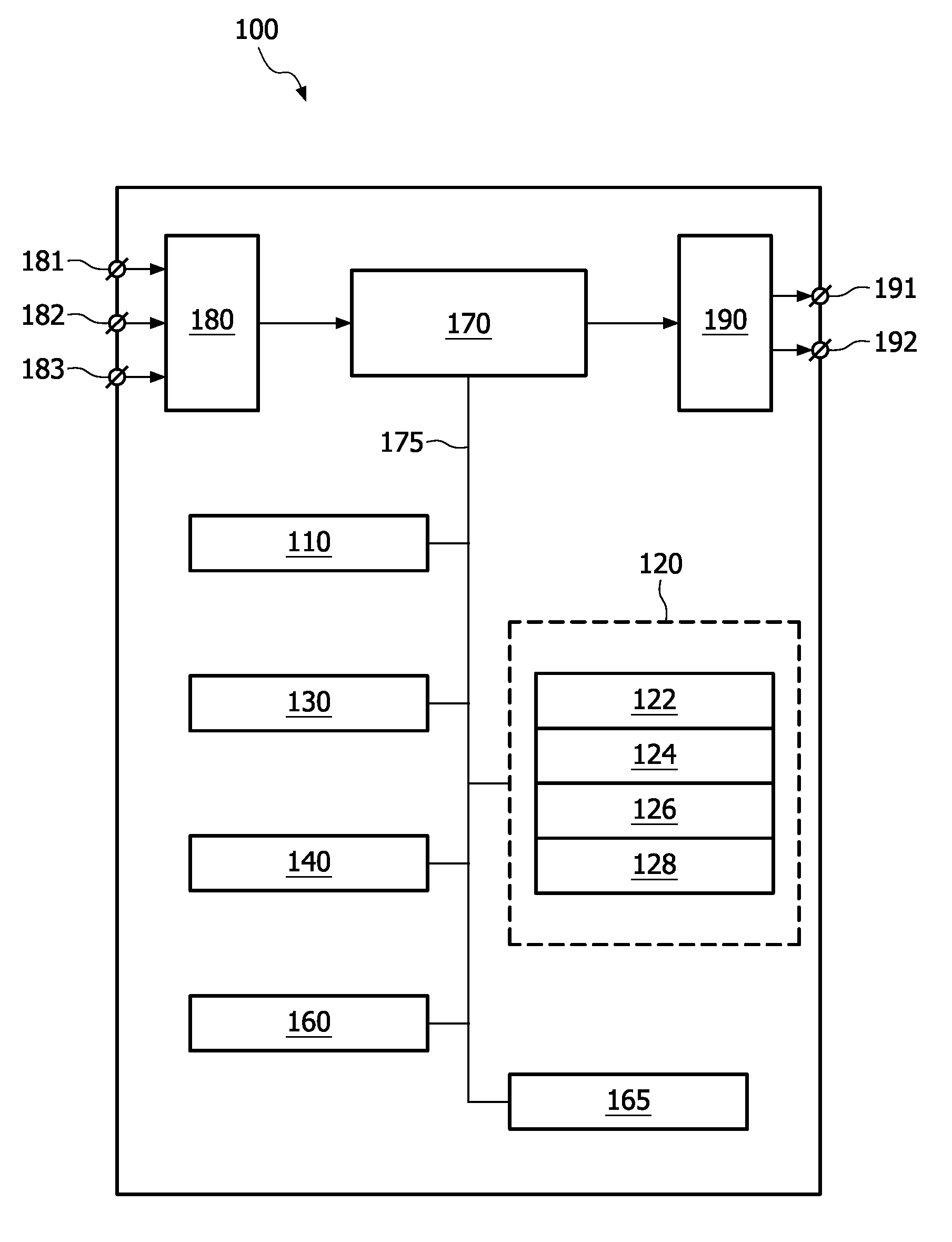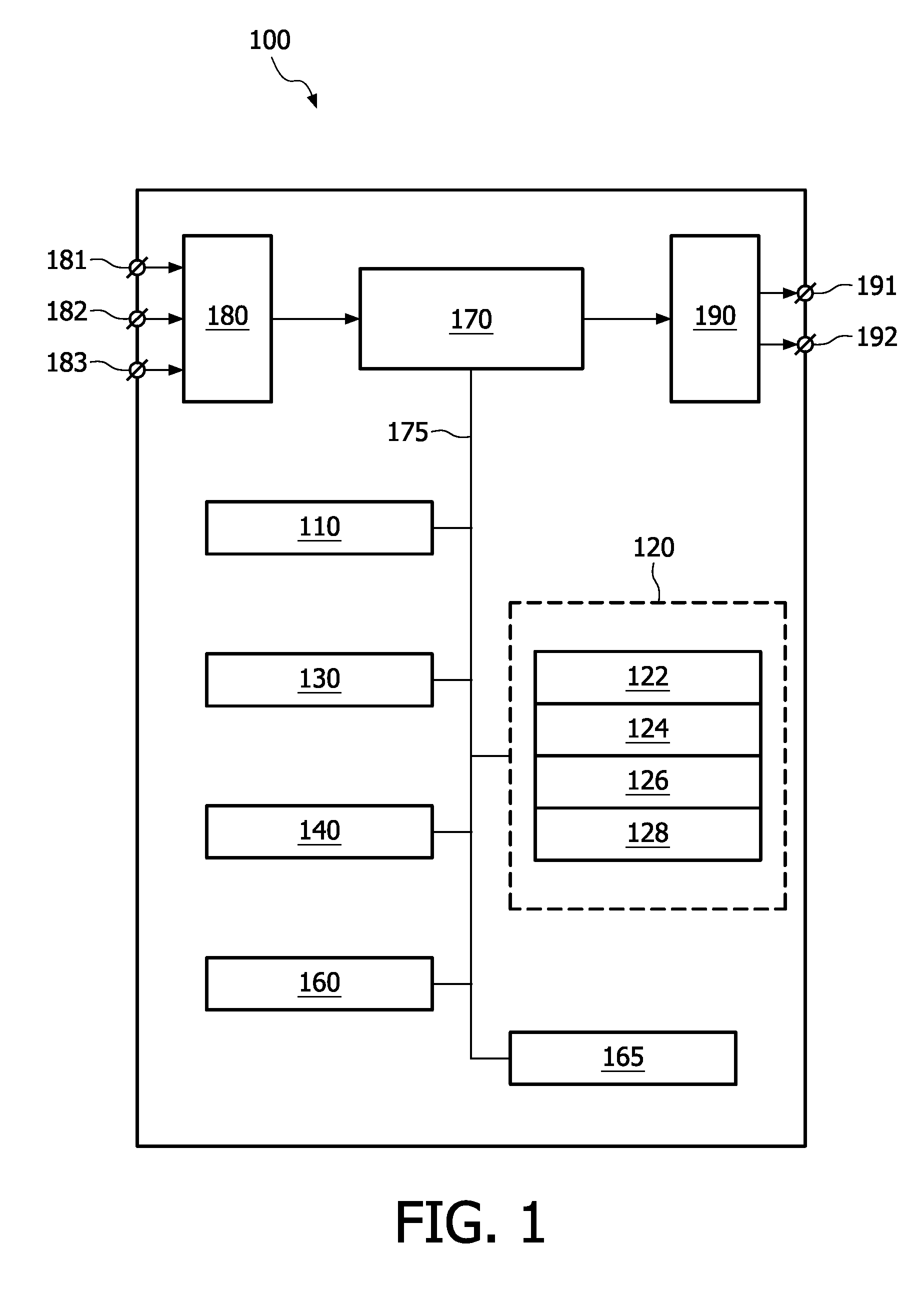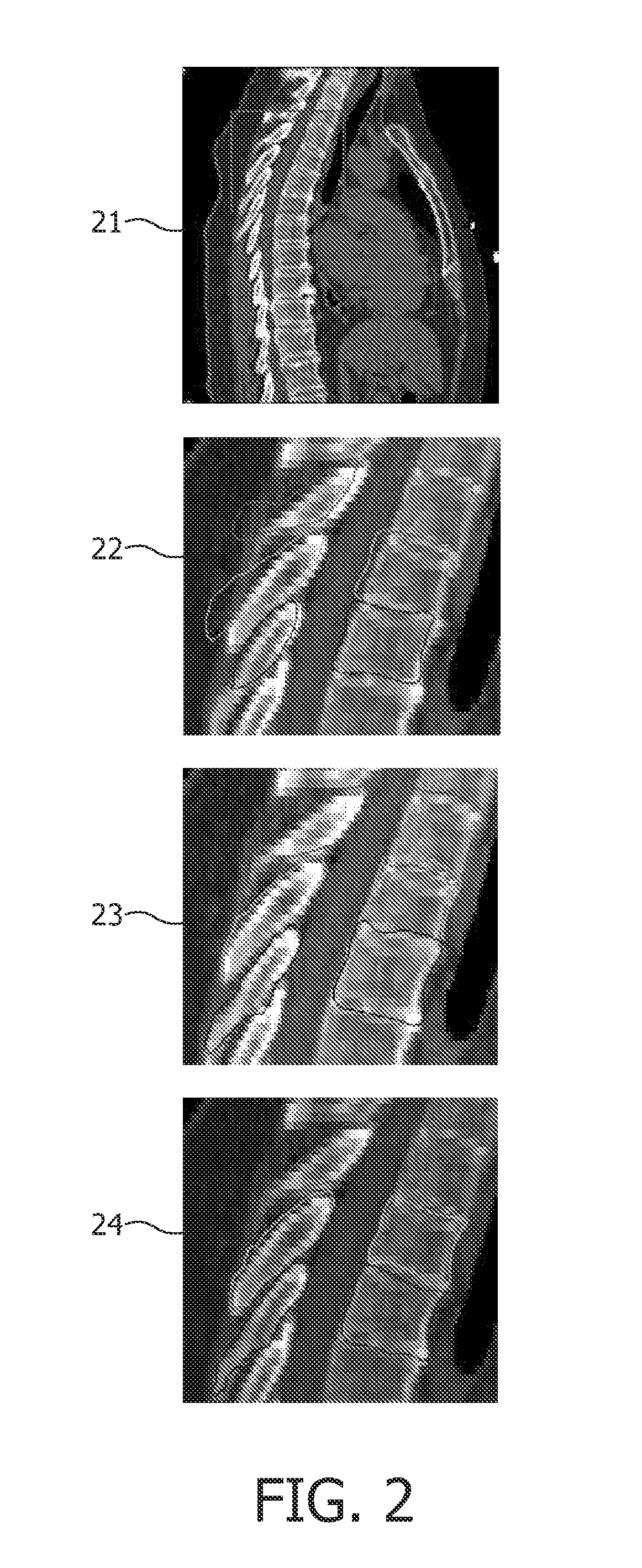Mesh collision avoidance
- Summary
- Abstract
- Description
- Claims
- Application Information
AI Technical Summary
Benefits of technology
Problems solved by technology
Method used
Image
Examples
Embodiment Construction
[0039]FIG. 1 schematically shows a block diagram of an exemplary embodiment of the system 100 for segmenting an object in image data using model-based image segmentation, the system comprising a feature unit 120 for identifying features in the image data for computing an external energy of a mesh on the basis of a current position of the mesh, wherein the feature unit 120 further comprises:
[0040]a candidate feature unit 122 for selecting a plurality of candidate features in the image data, for identifying a feature to be included in the features identified in the image data;
[0041]a position unit 124 for determining a position of each candidate feature of the plurality of candidate features relative to a region of the image data;
[0042]a feature function unit 126 for computing a strength of each candidate feature, wherein the strength of each candidate feature depends on the position of each candidate feature relative to the region; and
[0043]an evaluation unit 128 for evaluating each ...
PUM
 Login to View More
Login to View More Abstract
Description
Claims
Application Information
 Login to View More
Login to View More - R&D
- Intellectual Property
- Life Sciences
- Materials
- Tech Scout
- Unparalleled Data Quality
- Higher Quality Content
- 60% Fewer Hallucinations
Browse by: Latest US Patents, China's latest patents, Technical Efficacy Thesaurus, Application Domain, Technology Topic, Popular Technical Reports.
© 2025 PatSnap. All rights reserved.Legal|Privacy policy|Modern Slavery Act Transparency Statement|Sitemap|About US| Contact US: help@patsnap.com



